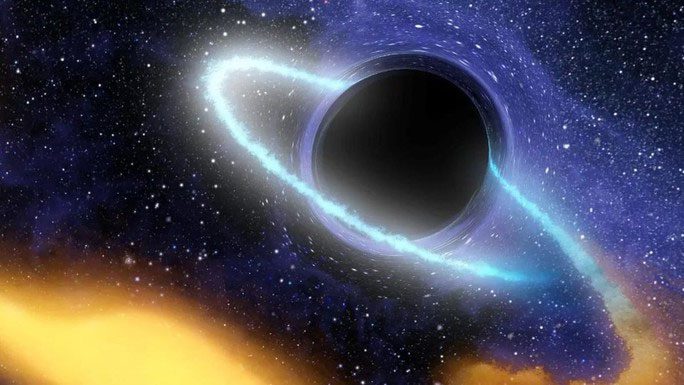Anomalies observed in the data from the European Space Agency’s (ESA) Gaia satellite mapping the sky may very well be the “legendary star” – a boson star – made of dark matter.
Two astrophysicists, Alexandre M. Pombo and Inppocratis D. Saltas from the Institute of Physics at the Czech Academy of Sciences, analyzed Gaia’s data on a pair of remarkably strange objects, once thought to be a star orbiting a black hole.
This pair is located 1.4 astronomical units (AU, approximately the distance from the Sun to Earth) apart and orbits each other every 188 days.

Graphic representation of the mysterious star pair, one of which may be a “ghost star” made of dark matter – (Image: NASA).
According to Space, the first object in the pair is easily explained. It is a star with a mass of about 0.93 times that of the Sun and has a similar chemical composition.
However, its companion is much more mysterious. Gaia’s data allowed scientists to “weigh” it, revealing that it is a massive object with a mass 11 times that of the Sun. Yet, it remains invisible. It is something that cannot be seen.
Initially, it was suspected to be a black hole. The black hole-star pair is not unusual in the universe, where low-mass black holes form from a massive star exhausting its energy, dying, and collapsing.
However, the parameters provided by the star system do not completely align with that hypothesis. There began to be suspicion that it must be something much stranger. A new study, recently published online on arXiv, suggests that it must be “a boson star.”
Bosons are particles that carry natural forces, for example, photons are bosons that carry electromagnetic force. Dark matter is viewed in astronomy as a type of new boson, leading to the theoretical possibility of a new hypothetical object known as a boson star, a star made entirely of dark matter.
This type of “ghost star” cannot be directly seen, but can be “observed” indirectly through its interactions with its surroundings, such as the companion star.
Matching this hypothesis with Gaia’s data, the Czech scientists believe the mystery troubling them may indeed be that “legendary star.”


















































